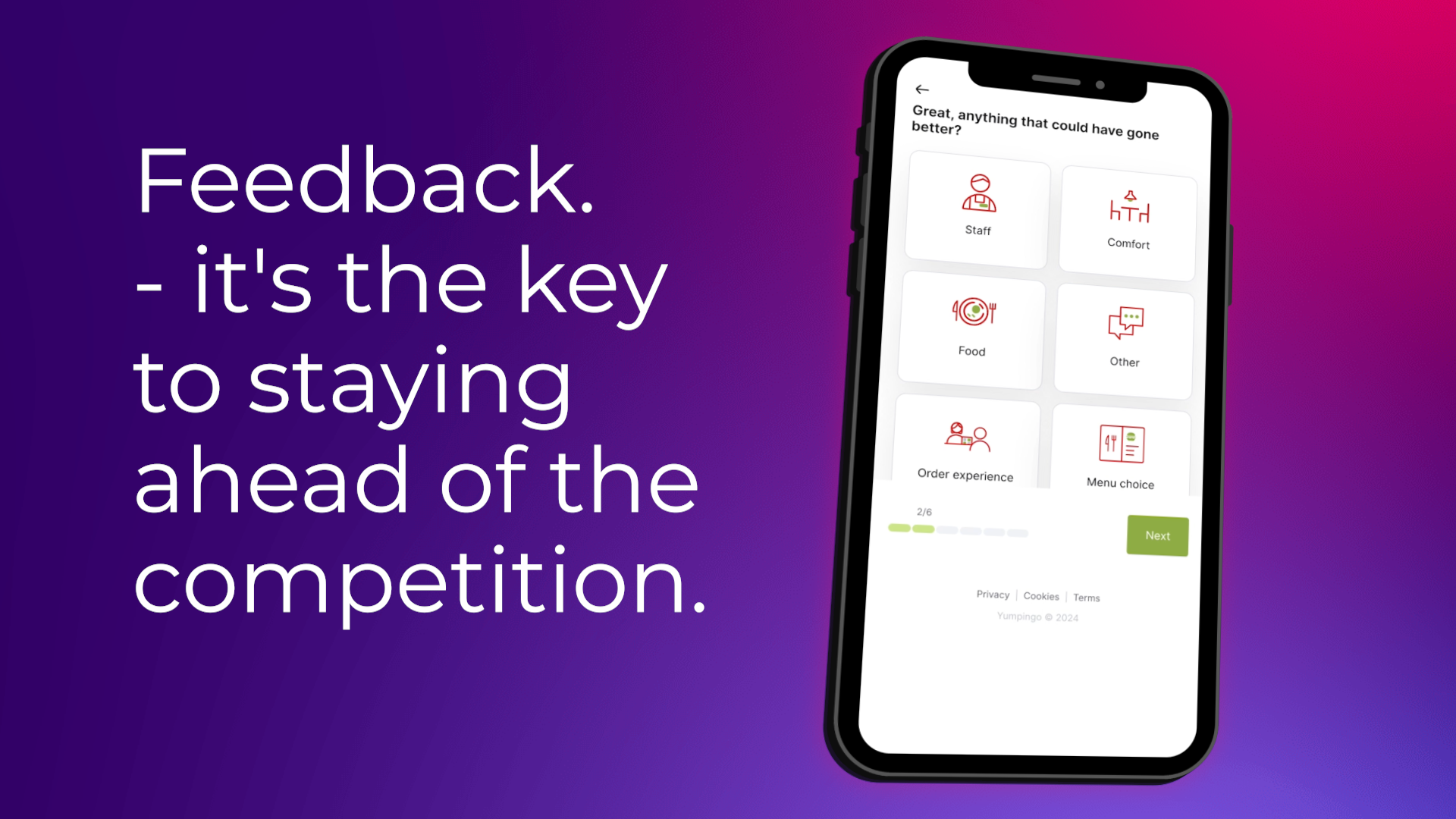Increase Prices or Decrease Quantity? Menu Questions, Answered
Finding the balance between menu innovation, value perception, and quality control
The stats heard ’round the world – menu price inflation hit a new 40-year high in March, full-service menu prices rose 8% year-over-year, and limited-service prices rose 7.2% – not to be outshined by grocery prices which increased by 10%. Being in the business of food and people has never felt more polarizing.
With the restaurant industry experiencing collective pressure to make reactive and swift menu pricing decisions, it’s mission critical to not lose sight of how each change is impacting customer satisfaction and loyalty.
Most restaurateurs will look at sales data to see if changes are landing or not, but sales have always been a lagging indicator of what’s actually happening. And when you layer on the unpredictability of the past few years and a rapidly changing market, today’s operators are more in the dark than ever on how to best navigate.
Unfortunately, there’s a lesson in pricing to be had – more sales doesn’t equate to better margins. Brands like Chipotle launched a 4% increase in menu pricing and are bracing themselves for the day inflation stabilizes. In the meantime, they reported that margins are thinner than ever, so the impact more sales and higher prices can make on the business is negligible without shaking up menu items and suppliers.
Consumers have always been price-sensitive, especially in the fast casual and QSR sector. A new report from Revenue Management Solutions stated that visits to drive-thrus decreased in the beginning of 2022 versus 2021. A few years ago, McDonald’s changed the prices on the highly esteemed dollar menu. Consumer response was… less than positive:
We’ve since entered a world where menu changes and price increases are mandatory in order to off-set rising food and labor costs, and believe it or not – there is a right and wrong way to execute on this.
How to know when it’s the right time to make changes to your products
It took a change.org petition (and a request from Dolly Parton) in order for Taco Bell to bring back its Mexican pizza after taking a two-year hiatus. Fans of the dish were crushed when it was removed from the menu in 2020, so much so that they got more than 200,000 signatures to request its return. The company initially removed the item, and a few others, to improve speed and operations.
What went under the radar during that process: they removed one of the items vegetarians loved the most. Having the ability to do market research by territory or menu item would ensure that fans – wherever they are, whatever their preferences are – stay loyal as your brand navigates through change.
Consumers in certain regions might have stronger food preferences over another. Overall, taking a blanket approach to menu changes might seem efficient but will ultimately leave potential sales on the floor and unhappy customers heading to your competition.
When the market becomes volatile, operational changes become a priority, but are often reactive. For example, we all know wings are scarce, and many beloved brands almost exclusively sell wings. How they should approach menu changes: select a subset of stores to market new concepts, like testing out chicken nuggets or switching to a new supplier in hopes of reducing food costs. In a portion of your brand, you can launch your new initiative, whether it be a change in pricing, packaging, etc. in order to safely and efficiently prove it out. Through A/B testing, you run your test for a period of time that’s dependent on how you’re measuring success. If you have real time analysis over how each test is performing, your testing period doesn’t have to last so long in order to get the ultimate answer.
From conception to testing to determining long-term viability, don’t let inflation and supply chain challenges get in the way of running successful operations.
Maintain a certain level of price transparency
Brands typically look at what profitability they need to produce for a particular dish, which is a great starting point.
According to a recent Square survey report, 77 percent of customers said they “would understand if their favorite local restaurants raised prices”, which has led to a number of restaurants updating websites and menus with disclaimers that reference new ‘service charges’ or ‘tip included’. The thought process assumes if a restaurant is more forthright about these new processes and procedures, the customer will know the reason(s) behind each change and be more willing to invest in the new restaurant experience. Consumers almost expect it these days, but how a brand delivers the message will set them apart from the rest. By understanding where your customers see the most value in the restaurant experience, you can weave that messaging into any announcements that need to be made.
However, raising prices can only go so far, so many brands have invested more heavily in menu engineering to get a deeper understanding of their customer base and what their preferences are. Easy wins might look like:
- Reorganizing items on the menu to bring attention to the dishes that aren’t ordered as frequently
- Adding descriptions for each menu item, like where the ingredients were sourced
- Removing dollar signs from the menu so customers focus on what matters most – quality and value!
A few examples of how restaurant brands are navigating menu changes:
“We offer a tipping option for our customers and have had a wonderful response, which has remained consistent with menu price increases. As with gratuities in general, a lot depends on the level of service received and the accuracy and quality of the food.” – Keith Kitsis, Crazy Bowls & Wraps
“Hard goods like to-go boxes, chopsticks and forks, those things are super expensive, so as long as we can be mindful and fair to everybody in the process we’ve found that our guests have been super supportive and willing to pay that fee.” – Tony Castelli, Marketing Director, E+O Kitchen
“Make it a point to reinforce that even with the price increase, your product or service is still a great deal. A price increase is more palatable if there is an option to save money. Even if you don’t expect anyone to take the cheaper option, offer it anyway. Consumers appreciate choices.” – pricing-strategy expert Rafi Mohammed
As you take a step back and assess what the long term pricing strategy will be, stay flexible, transparent, and on the pulse of how those changes are landing with your guests.
Gain greater control of value and quality perception
If you can quantify the value of an item, you can determine whether there’s an opportunity to increase the price or reduce the portion size. Currently, two in five consumers feel they’re getting less value from restaurants now than they were just last month, with 82% reporting higher prices as the reason.
So what’s the best way to do this? Common menu pricing strategies include relying on gut feelings, solely looking at sales data, or using a blanket approach to pricing, such as increasing prices 10% across the menu. However, these approaches aren’t as sustainable in the long run.
The trick to increasing prices: you’ve got to go slow. Increase price minimally, but frequently. If small changes each quarter are below the ‘just noticeable difference’ range for the consumer then your volume of sales will stay stable while margins will grow.
Once implemented, assess how an operational or dish adjustment, whether minor or critical, resonates with your guests by customizing survey questions to fit a specific time frame, location, or menu item. As long as your menus are flexible and manageable, making small tweaks along the way will only help your cause.
Don’t fear change – leverage dish-level data as your guide to making the right menu adjustments. Brands have a tendency of raising the price of the best-sellers, but they need to determine which dishes customers find most valuable and go from there. If you can quantify the value of a dish, you can determine whether there’s an opportunity to increase the price or reduce the portion size to maximize profits.
Disney CFO, Christine McCarthy, recently shared her thoughts on price adjustments after the brand increased prices of several dishes and cocktails. “We can cut portion size, which is probably good for some people’s waist lines, or we can look at pricing where necessary.”
Ensuring that the value perception of your customers is driving your menu pricing decisions can help offset the impact of ongoing supply chain issues, and the rise in the cost of ingredients, global gas prices, and labor.
A general rule: stay on the pulse of restaurant health and let the data be your guide.
Share this:
Subscribe to our Newsletter
You May Also Like
These Related Stories

The power of asking the right questions

Three words every restaurant should avoid: “How was everything?”
